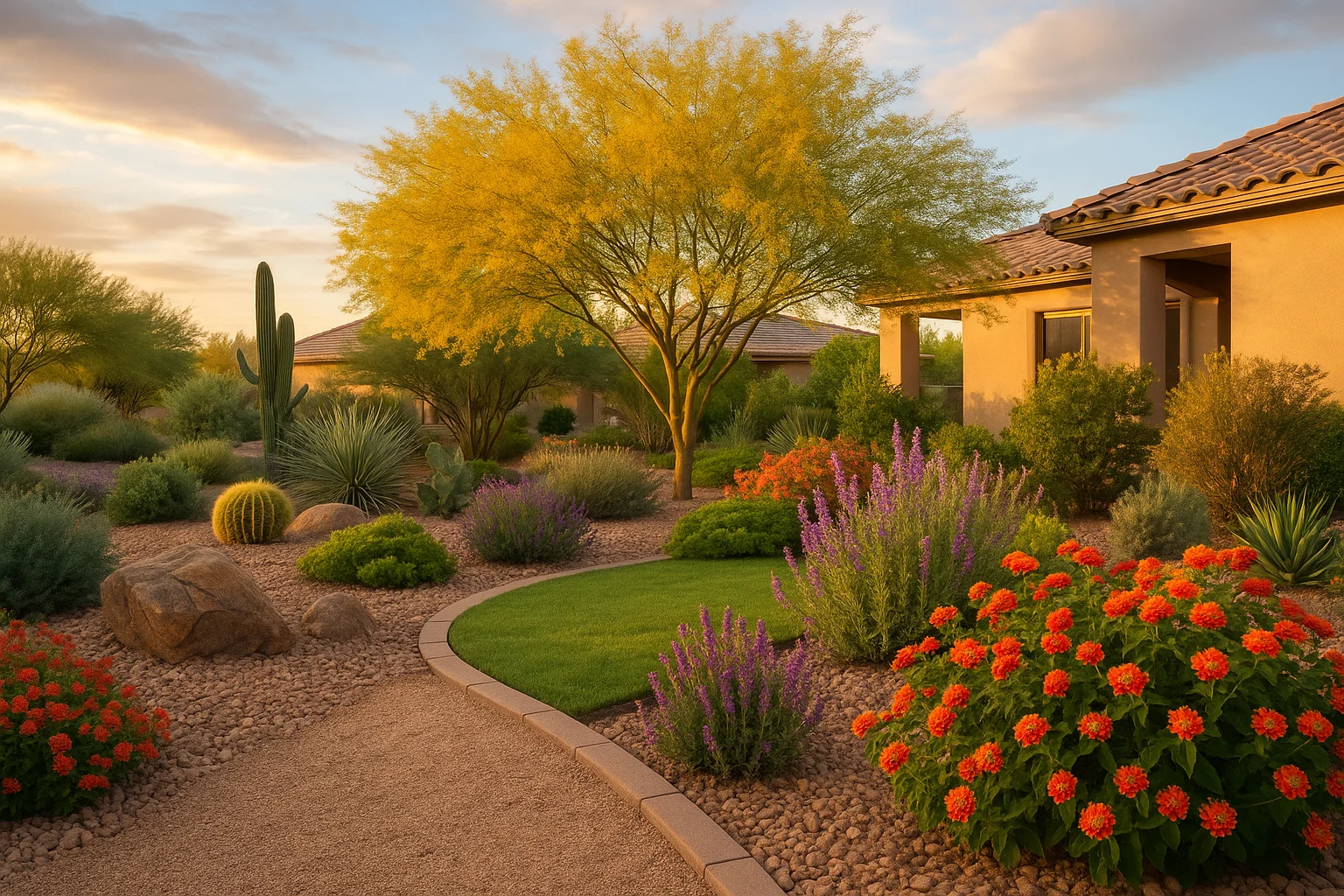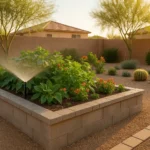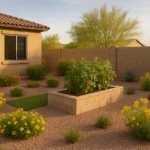Spring in Gilbert, Arizona is a time of renewal, as the city’s flora bursts into life against a backdrop of unpredictable weather patterns. As a gardener, you must prepare your yard to flourish regardless of whether it’s pouring rain or blazing sunshine. This guide to blossoming spring yard care in Gilbert provides you with the science-based knowledge and tools to not just survive, but thrive in the face of any weather conditions.
Understanding Gilbert’s Spring Climate
Before we delve into the specifics of yard care, it’s crucial to understand the peculiarities of Gilbert’s spring climate. The season is characterized by mild to warm temperatures, typically ranging from 50 to 80 degrees Fahrenheit. However, Gilbert’s springtime is also known for its unpredictability, with sudden rainstorms not uncommon. This weather variability can pose challenges to gardeners, but with the right strategies, it can be turned into an advantage for your yard.
With its unique desert climate, Gilbert receives most of its annual rainfall during two rainy seasons in winter and summer, causing the spring season to swing between dry and wet periods. While this may seem daunting at first, it’s perfectly manageable if you understand the science behind soil health and water conservation, which we will explore in the following sections.
Science Fact: The unpredictable nature of Gilbert’s climate is due to its location in the Sonoran Desert. The desert’s hot, dry conditions are occasionally interrupted by periods of heavy rainfall, creating a unique environment for plant growth.
Adapting to Rainy Periods

When the skies open up and the rain starts pouring, it’s crucial to have a yard care strategy that capitalizes on this precious resource while preventing potential damage. These periods of sudden rainfall can result in soil erosion and nutrient leaching if not properly managed. However, with the right approach, you can use these rains to enhance your soil’s health and provide a natural source of irrigation for your plants.
One effective method to manage heavy rainfall is the incorporation of rain gardens into your yard. These are strategically placed depressions planted with native species that can withstand both waterlogged and dry conditions. Rain gardens act as a natural sponge, soaking up rainwater runoff and allowing it to slowly percolate into the soil, reducing erosion and improving soil health.
Another vital practice is mulching. Applying a thick layer of organic mulch around your plants will help retain soil moisture, reduce runoff, and prevent the leaching of nutrients. It also adds valuable organic matter to the soil as it breaks down, improving its structure and fertility.
“The best way to manage rain in your yard is to work with nature, not against it. With strategic planning and sustainable practices, you can turn a rainstorm into a boon for your garden.” – Priya Shah
Prepping for Dry Spells
Even in spring, Gilbert can have prolonged periods of dry weather. It’s essential to prepare your yard for these dry spells to ensure your plants can survive and thrive. Start by choosing drought-tolerant plants, particularly native species that are well-adapted to the local climate conditions. These plants require less water and are more resilient to the dry spells common in Gilbert’s spring.
Water conservation should be a top priority during dry periods. Implementing smart watering strategies such as drip irrigation or soaker hoses can ensure your plants receive enough water without wasting this precious resource. Watering in the early morning or late evening can also reduce evaporation.
It’s also important to keep a close eye on your soil’s health. During dry periods, the soil can become compacted and lose its ability to retain water and nutrients. Regularly aerating your soil can help alleviate this issue, promoting a healthy root system and improving water infiltration.
Science Fact: Drought-tolerant plants have adapted to survive in dry conditions through various mechanisms, such as deep root systems that tap into the water table, leaves that reduce water loss, and the ability to go dormant during drought periods.
Maintaining a Healthy Soil
The foundation of any thriving garden is healthy soil. In Gilbert’s variable spring climate, maintaining soil health can be a challenge, but it’s not insurmountable. Start by regularly testing your soil. This will give you valuable information about its pH and nutrient levels, allowing you to make informed decisions about fertilization and amendment needs.
Composting is another excellent way to improve your soil’s health. Compost adds organic matter to the soil, enhancing its structure, water-holding capacity, and nutrient content. Plus, it’s a great way to recycle kitchen and yard waste!
Remember, a healthy soil is teeming with beneficial microorganisms that aid in nutrient cycling and disease suppression. By nurturing these microscopic allies, you can build a resilient garden that can withstand the challenges of Gilbert’s unpredictable spring weather.
“Soil is more than just dirt. It’s a living, breathing ecosystem that nourishes your plants. By taking care of your soil, you’re not just growing a garden – you’re nurturing life.” – Priya Shah
Springtime Pest and Disease Management
No discussion about spring yard care would be complete without addressing pests and diseases. The onset of warm weather can bring a surge of insect pests and plant diseases. However, with a proactive approach, you can keep these threats at bay.
Start by practicing good sanitation in your yard. Remove fallen leaves and dead plant material that can harbor pests and diseases. Regularly inspect your plants for early signs of infestation or disease, such as discoloration or distorted growth. Early detection can make treatment much more effective.
When it comes to treatment, opt for eco-friendly solutions. Beneficial insects, such as ladybugs and lacewings, can be natural predators of harmful pests. Similarly, biological fungicides can handle common diseases without harming the environment.
In the end, the key to successful spring yard care in Gilbert — rain or shine — is adaptability. By understanding your local climate, using sustainable practices, and keeping a keen eye on your garden, you can create a vibrant and resilient yard that’s ready for anything Mother Nature throws at it.






